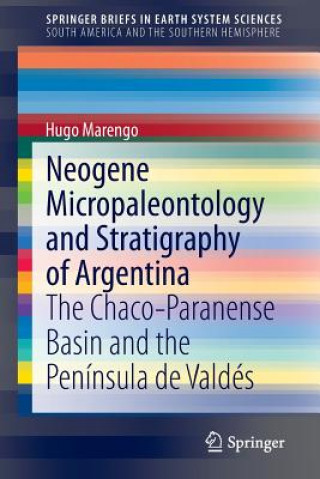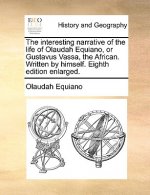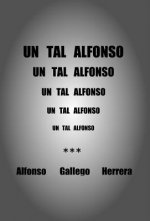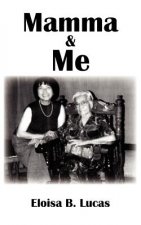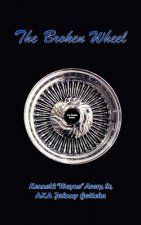
Doručenie
Nákupný poradca





Nehodí sa? Žiadny problém! U nás môžete do 30 dní vrátiť
 Darčekový poukaz
v ľubovoľnej hodnote
Darčekový poukaz
v ľubovoľnej hodnote
S darčekovým poukazom nešliapnete vedľa. Obdarovaný si za darčekový poukaz môže vybrať čokoľvek z našej ponuky.
Neogene Micropaleontology and Stratigraphy of Argentina
 Angličtina
Angličtina
 154 b
154 b
30 dní na vrátenie tovaru
Mohlo by vás tiež zaujímať


The micropalaeontologic composition and some sedimentologic features were studied in 18 boreholes in the Chacoparanense and Salado Basins, and it was evaluated information from about 180 additional boreholes. Two marine levels were recognized interbedded with continental sediments; each marine level is characterized by specific associations of foraminifers, ostracods and calcareous nannoplankton. The lower marine level was erroneously assigned in the past to the Maastrichtian-Danian; it is called the Laguna Paiva Transgression (TLP) and bears microfossils of Late Oligocene?-Early Miocene age. The upper marine level corresponds to the Paraná Formation or the Entrerriense-Paranense Transgression (TEP), from the Middle-Late? Miocene. Both transgressions flooded the whole Pampa and Chaco Plains and reached some sectors in the Sierras Pampeanas, Cuyo and Northwest of Argentina; the TLP and TEP can be correlated respectively with the Leonense and Entrerriense transgressions in the Patagonia. In the Salado Basin the TLP is characterized by microfaunas with low to moderate diversity, dominated by Elphidium spp., Cribroelphidium spp., big and ornamented miliolids, ostracods and nannofossils belonging to the biozones NP25-NN1 (Chatian-Aquitanian); in the Chacoparanense Basin, Cribroelphidium, Nonion, Ammonia and Peneroplis are the most outstanding genera. The microfaunas of the TEP belongs to the P. tuberculatum informal Zone; nannofossils of the Salado Basin are typical of the Biozone NN6 (Middle Serravalian). The microfossil assemblages suggests tropical to subtropical climates during the TLP. The water temperature could be higher than today s adjacent seas during the TEP, but lower than during the TLP. The first calcareous nannoplankton recovery is reported from both the TLP, the TEP and from the Miocene of Argentina. The samples with maximum abundance and diversity of foraminifers and ostracods may represent the levels of maximum flooding in the Salado Basin. To the continental interior the microfaunas become poorer, reaching the NW and NE of Argentina with few species typical of brackish environments. The geographic distribution of the microfossils indicates that both transgressions flooded from the Salado Basin to the north. Ihering (1927) pointed out the similarities between the Caribbean and Argentinean marine faunas during the Miocene; he supposed a migration of the faunas from north to south trough an hypothetic intracontinental seaway, The Arm of Tethys . The collected data demonstrate that this migration was not possible trough the continental interior, and probably it was done by the eastern continental platform of South America. The Laguna Paiva Formation is formaliced and the Chaco Formation is redefined; the latter was also divided into the Palermo, San Francisco and Pozo del Tigre Members. The Chaco, Laguna Paiva and Paraná Formations are clustered in the Litoral Group, representing the main filling of the Basin during the Cenozoic. The Litoral Group is essentially continuous, but there is a discordance between the Laguna Paiva and Paraná Formations in the centre of Formosa, that could be correlated with the Quechua I tectonic phase. There is a good correlation between the TLP and TEP microfossil ages, the global eustatic changes, and the convergence rate and obliquity between Nazca and South America plates. This provide an indirect way to estimate the length of both transgressions, and the factors that produced them. This correlation suggests that both transgressions were produced by the combination of tectonic and eustatic features. The following geologic and paleogeographic evolution in the Neogene of the Chacoparanense Basin is estimated: from the end of the Serra Geral basaltic extrusion (Early Cretaceous) the Chacoparanense region was an upland, and the continental sedimentation was probably limited to isolated areas. About at the end of the Oligocene (c. 26 My) there was an important increase in the Nazca-Sout
Informácie o knihe
 Angličtina
Angličtina
Kategórie




 Ako nakupovať
Ako nakupovať

















